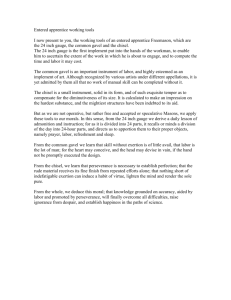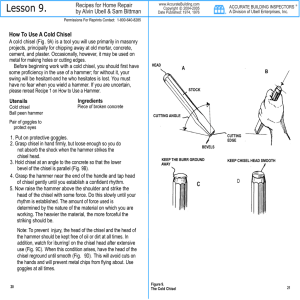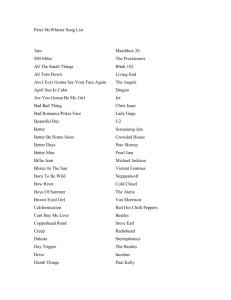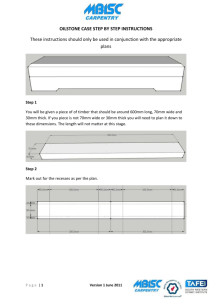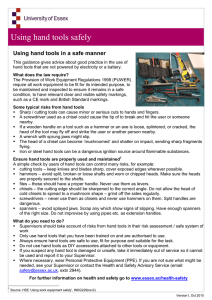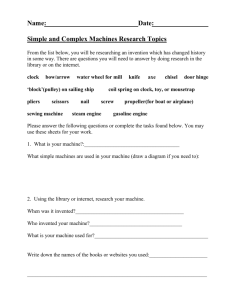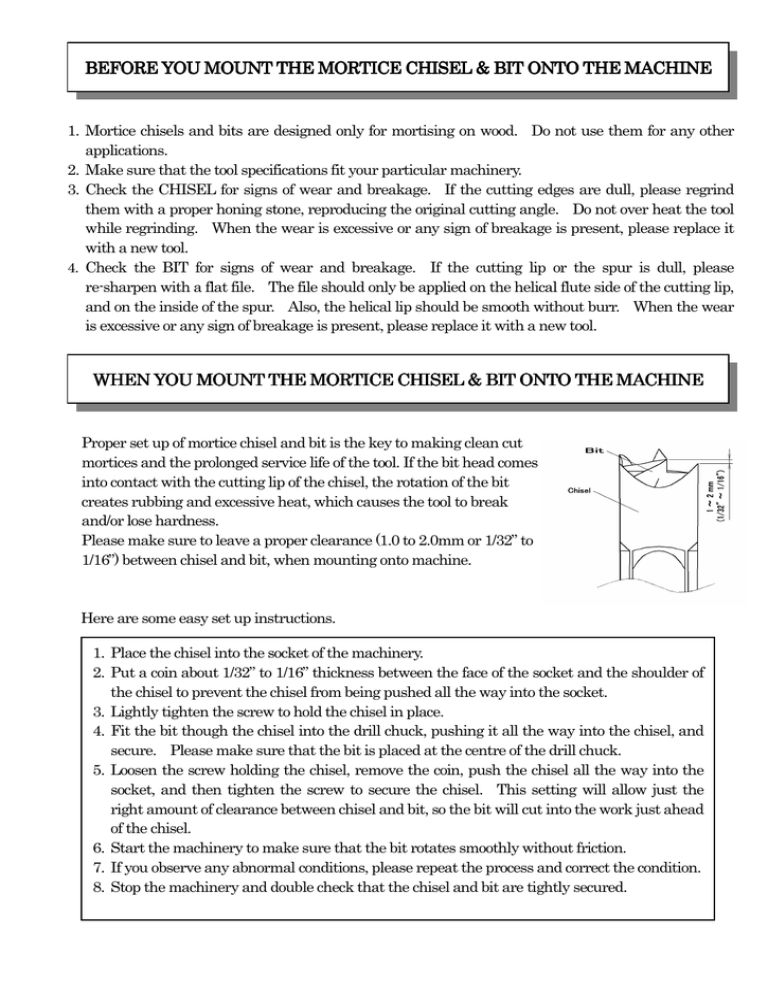
BEFORE YOU MOUNT THE MORTICE CHISEL & BIT ONTO
ONTO THE MACHINE
1. Mortice chisels and bits are designed only for mortising on wood. Do not use them for any other
applications.
2. Make sure that the tool specifications fit your particular machinery.
3. Check the CHISEL for signs of wear and breakage. If the cutting edges are dull, please regrind
them with a proper honing stone, reproducing the original cutting angle. Do not over heat the tool
while regrinding. When the wear is excessive or any sign of breakage is present, please replace it
with a new tool.
4. Check the BIT for signs of wear and breakage. If the cutting lip or the spur is dull, please
re-sharpen with a flat file. The file should only be applied on the helical flute side of the cutting lip,
and on the inside of the spur. Also, the helical lip should be smooth without burr. When the wear
is excessive or any sign of breakage is present, please replace it with a new tool.
WHEN YOU MOUNT THE MORTICE CHISEL & BIT ONTO
ONTO THE MACHINE
Proper set up of mortice chisel and bit is the key to making clean cut
mortices and the prolonged service life of the tool. If the bit head comes
into contact with the cutting lip of the chisel, the rotation of the bit
creates rubbing and excessive heat, which causes the tool to break
and/or lose hardness.
Please make sure to leave a proper clearance (1.0 to 2.0mm or 1/32” to
1/16”) between chisel and bit, when mounting onto machine.
Here are some easy set up instructions.
1. Place the chisel into the socket of the machinery.
2. Put a coin about 1/32” to 1/16” thickness between the face of the socket and the shoulder of
the chisel to prevent the chisel from being pushed all the way into the socket.
3. Lightly tighten the screw to hold the chisel in place.
4. Fit the bit though the chisel into the drill chuck, pushing it all the way into the chisel, and
secure. Please make sure that the bit is placed at the centre of the drill chuck.
5. Loosen the screw holding the chisel, remove the coin, push the chisel all the way into the
socket, and then tighten the screw to secure the chisel. This setting will allow just the
right amount of clearance between chisel and bit, so the bit will cut into the work just ahead
of the chisel.
6. Start the machinery to make sure that the bit rotates smoothly without friction.
7. If you observe any abnormal conditions, please repeat the process and correct the condition.
8. Stop the machinery and double check that the chisel and bit are tightly secured.
INSTRUCTIONS ON
PROPER USE OF MORTICE CHISEL AND BIT
MAKE SURE THAT YOU HAVE READ AND UNDERSTOOD THESE INSTRUCTIONS
AND THE USERS MANUAL OF THE CHISEL MORTICING MACHINE YOU ARE
USING.
WARNING
UNLESS USED CORRECTLY AND
IN ACCORDANCE WITH THESE INSTRUCTIONS, USERS
AND PERSONS NEAR BY MAY SUFFER SERIOUS INJURIES.
1. This tool has extremely sharp cutting lips and points, which may cause injuries. Please
handle with extra care and never touch the tool in action.
2. This tool consists of a chisel and a bit that are designed to work together. Never use one or
the other, or match a different size tool or another manufacturer’s tool.
3. This tool is designed to bore a mortice in solid wood materials. Do not use for any other
purpose or on other materials.
4. Before use, make sure that the tool is in perfect condition without any cracks, bend, strain,
worn out cutting lips, missing parts, etc. If any abnormal condition is present, do not use the
tool until the abnormal condition is corrected.
5. When mounting the tool to the machine, make sure that the clearance between the chisel and
bit is kept as written on the reverse side. If the chisel and bit are not set up properly, friction
will cause over heating of the tool, resulting in burning, fire hazard and breakage of the tool.
6. After mounting the tool to the machine, test run and make sure that no abnormal sound or
trembling of the tool is present. In case any abnormal situation is present, repeat the
mounting process and make sure that the problem is resolved before proceeding.
7. During operation, keep under the maximum rotation on the bit (Nmax = 3,600rpm).
8. Check periodically to make sure that no abnormal situation is present. Even if initial
mounting of the tool was properly done, there are cases where the machine has problem(s) of
loose chuck or shaft, etc. causing abnormal situations to arise during the course of operation.
9. When working on hardwood materials or knots, try to bore in increments, avoiding the
situation where the rotating bit keeps rubbing on the work piece instead of cutting into it.
This situation will result in over heating and losing hardness of the tool and fire hazard.
10. Do not jam the tool into the work piece. This may cause the tool to break, and broken piece(s)
may hit the operator and/or any persons nearby. Please wear eye protection while operating.
Copyright© 2009 Nakahashi Seisakusho Co., Ltd. all rights reserved

